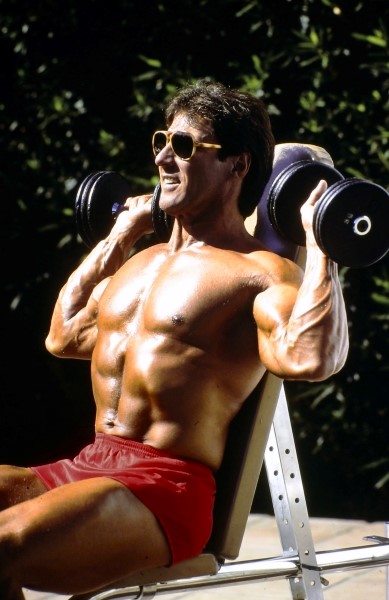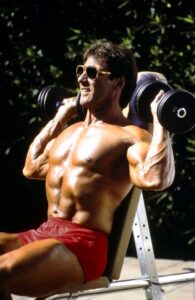Blog 31 – Joy of Training Light


Slides 3728
The Joy of Training Light
Are you excessively sore from your workouts? Do you have injuries? If so, try focusing on three main points:
1.Train with lighter weights doing slower movements with higher reps, use more rubber cables between sets of weight movements. Stretch longer between sets.
- Watch for delayed onset soreness. If detected adjust according to point number 3:
- Adjust the frequency and duration of each workout.
The best way to avoid excessive muscular and joint soreness is to train with lighter weights, higher reps, and slower movements, especially negatives. I’m finding that training with light weights is fun! Doing one set of each exercise, not to failure but to my last rep in good form, then stretch 20 seconds and move on to the next exercise. The reps are between 12 and 20 and up to 50 per set on ab work. I’m completing a set and moving on to the next one approximately every two minutes. I find myself looking forward to workouts simply because I’m only doing one set of everything. Sure, makes the quicker workout more interesting with better blood circulation from a good pump. I’m just about ready to move up to two sets of each exercise by doing 12 to 15 reps on the first set, stretch, increase weight and do 8 to 10 reps on the second set.
Should you get sore from a workout? If so, when should the soreness occur? ‘Good Soreness’ is desirable following the workout, but when? The time it takes to feel soreness after a workout is known as soreness latency. Delayed onset soreness occurs when you do exercise more severely than you are accustomed to. You don’t get sore the day after your workout; next day you may be a little sore, and the next day really sore. It is taking your body longer to heal itself. The body takes longer to recognize the extent of the damage done before it retaliates with increasing degrees of soreness. If such soreness occurs stay warm and stretch a lot. It may take a full week before you are over, it, depending on the severity and your degree of fitness. It’s also better to do very light, high rep movements and stretch when you are sore.
A mode of treatment I recently discovered is magnesium oil. This important mineral is an electrolyte involved in nerve impulse transmission. Rubbing the oil on the skin creates a mild warming sensation and relaxes the muscles as the magnesium absorbs through the skin My left shoulder had been sore for weeks, being the non-operated on shoulder, I did all my reaching movements for the last year with that arm. By now it was grinding in exercise, and I was forced to eliminate overhead pressing movements. Frequently I’d put Salon Pas on it or even the more powerful prescription Lidoderm patches which numbed it slightly but after a few applications of the oil (every 12 hours) the pain disappeared, and the shoulder is getting stronger. Still, I’m careful but it’s nice to have another effective healing antidote.
How often should I train? How long should each workout last? It seems to be the case that the older you get the less frequently you should train — especially if you want to train hard each workout. The rule is train less frequently but harder. And when you get more rest to recuperate, you’ll be able to train harder.
I’m talking about training with weights not other kinds of exercise that can be done every day like aerobics and stretching. Based on my own experience of training for over 50 years, I have found:
Teens and 20s can train 6 times a week
30s train 5 times a week
40s train 4 times a week
50s and 60s train 3 times a week.
70s and above train two to three times a week.
The heavier you train the more the above generalization applies. In my late 60s, I’m training 4 four times a week because I’m training light. If I were using heavier weights and wanted to grow a bit more muscle, I’d train three times a week because I’d need the extra rest to recuperate.
I’m always more motivated when I know I have less to do. Just the thought of doing fewer sets makes me want to do them with more intent and focus. Training less frequently enables me to be rested, stronger and grow more.
Concerning the duration of each workout, it shouldn’t be longer than one hour. If you are using lighter weights, you can rest less between sets. Don’t waste time daydreaming or talking between sets and you’ll be done in less than an hour, I do my abbreviated sessions in 45 minutes. You can too.

